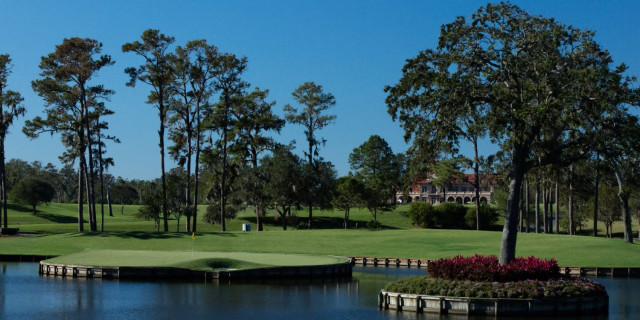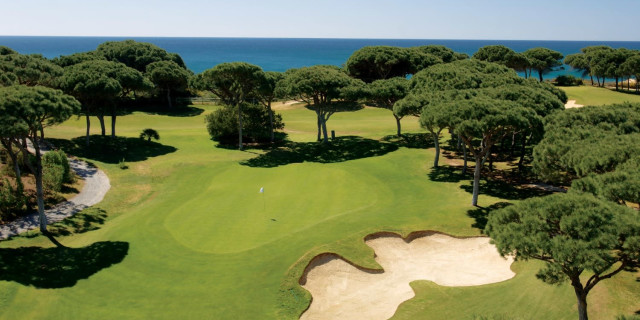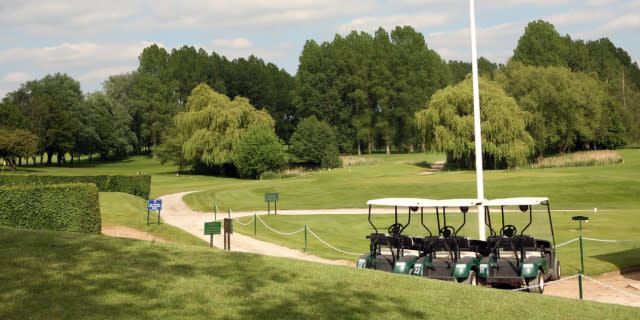Royal North Devon Feature Review
Royal North Devon, otherwise known as Westward Ho, is the oldest golf course in England. It was designed by old Tom Morris in 1864 and is regarded as the St Andrews of the south. Initially it was called the North Devon and West of England Golf Club.
In 1867 the Prince of Wales, later to become Edward VII and who was Patron of the Club, gave it its royal charter.
It is laid out on common land over the 650 acres of Northam Burrows, the course covering 170 acres, and has twice held the British Amateur Championship.

History
Royal North Devon has changed little over the years and is maintained to be as natural as possible with firm and fast fairways and greens. It is a course that allows free roaming by the resident sheep and wild horses that add to the green keeping efforts of the staff. It is flatter than I expected and undulates gently. This is a place of huge historical importance. Inside the warm and welcoming clubhouse, the golf museum, honours boards and trophies are worth a visit on their own.
Royal North Devon is pure, raw exhilaration and ultimately the experience of playing a fast running links in a stiff breeze will still test the very best in the game. We played it in beautiful sunshine with a gentle wind blowing in from the sea. I imagine it was at its most benign some of the holes still bit me quite sharply
Many of the greatest golfers have played at Royal North Devon but the most famous of them all is without doubt John Henry Taylor, or JH Taylor as he was more commonly known. He was born in Northam overlooking the course, starting his long association with the club as a caddie. He was one of the Great Triumvirate, winning five Open Championships, and dominating golf for 30 years along with Harry Vardon and James Braid.
The club honoured Taylor with a presidency in 1957 and his portrait and some of the clubs which he used to win his Open titles are proudly displayed in the clubhouse.
The clubhouse is worth a visit in its own right. For a golfing geek like me it was heaven. There was great food and friendly, welcoming service in a golfing environment unlike any other. All the items on display are of museum quality, detailing this wonderful game and its history over the years. The display helps to tell the story of the game and this remarkable club’s unique place in it. The clubhouse serves as a treasure trove of golf memorabilia second only to the R&A. A look at the club’s honours boards, dating back to 1864, is like a "Who’s Who" of the worlds golfing greats.
The Course
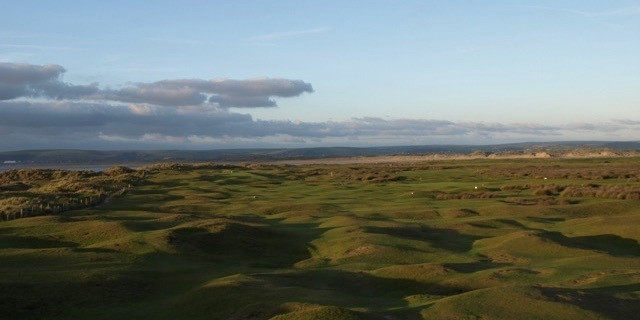
If you play here, you should consider using a local caddie arranged through the club. At the very least, you should buy the excellent course planner. As with most links, selecting the correct lines from the tee is crucial.
Before you play check the flag pole and mast attached to the first tee. This will give an idea of prevailing wind conditions, but expect it to change as the round progresses. Watch out, too, for the local rule regarding heaped or liquid manure. See the rear of the scorecard for direction.
We played from the white tees, giving us a par 72 measuring 6,693 yards. The Championship yardage from the black tees is over 7,000 yards.
First, Burn, par five, 480 yards
The opening hole is a par five of moderate length. It is reachable in two for some but the lateral water hazard that runs down the right of the hole before cutting across the front of the green has to be given the utmost respect.
Second, Baggy, 422 yards
This is a cracker of a golf hole. Hazards lie to the right in the form of a ditch and a road. You will need to hit a good approach to have a chance of holding the small upturned green.
Fourth, Cape, par four, 350 yards
This is an iconic hole over the famous sleepered bunkers. They are very deep and intimidating. Watch out for the arrow indicating the best line into the fairway.
The drive from the sixth offers a wonderful panoramic view of the course and Bideford Bay. The fairway could be described as a generous one but you must be down the right-hand side, and close to the sea rushes, for the best approach into the green.
Choosing the correct line off the tee at the seventh is also a requirement if you are to give yourself the best angle into a green that sits perfectly into the landscape and has a stunning backdrop.
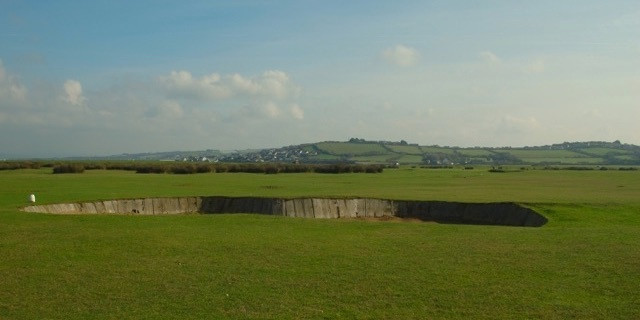
The back nine shouldn't be underestimated either and while the 13th doesn't quite know whether it is a long par four, or a short five, the upturned saucer of a green will test your short game fully.
The 15th hole, featuring the 'bear pit', is also a highlight coming home as is the green on the 16th.
Water must be navigated on the final two holes before you can relax and enjoy the fascinating clubhouse.
My lack of photographs for this portion of the course was caused by me becoming completely immersed in the challenge and trying to concentrate fully on my golf. This course was an absolute pleasure to experience, one that I would happily repeat again and again.
Before visiting check out the club website and view the web cams covering the tee boxes and verandas. You can control the camera position. For such a traditional club I love this use of technology and I have found myself re-visiting to check out the weather and today’s lucky players. There is also an interesting flyover video that gives a great overview of the course. Check out the pitch and putt course adjacent to the first tee. It’s a little belter.
Conclusion
Although golf has changed hugely in the last century and continues to develop, a great links course will always stand the test of time. This one has hardly changed over nearly 150 years and to play it is like taking a step back in time.
This course is a real sensory experience. Smell the mesh flags on the greens; they smell of the salt of the sea. The mesh prevents damage to the flag sticks when the wind and spray roar onto the courses.
As you walk along the holes by the beach don’t be surprised if you are distracted by the smell of the BBQs being used by surfers in the nearby beach front car park. There is also a Devon ice cream van in the same car park, from where I sampled some of the best ice cream I have ever tasted as we wandered up the fairway.
Royal North Devon is a great links course that oozes tradition and heritage and is as far removed as you can imagine from the manicured and manufactured championship courses we see every day on television.
I am not a regular links player but have fallen in love with this type of layout and challenge. My memories of this place will last a long time.
I would describe it as a bucket list course that should be visited and savoured at least once. Link it with a trip to play other courses in the Atlantic Links group and I guarantee you will not be disappointed. This collection of courses can compete with the best in the world.
For further information on the Atlantic Links and Andrews' trip visit the 'Atlantic Links Golf Trip' feature.
Related Content:


